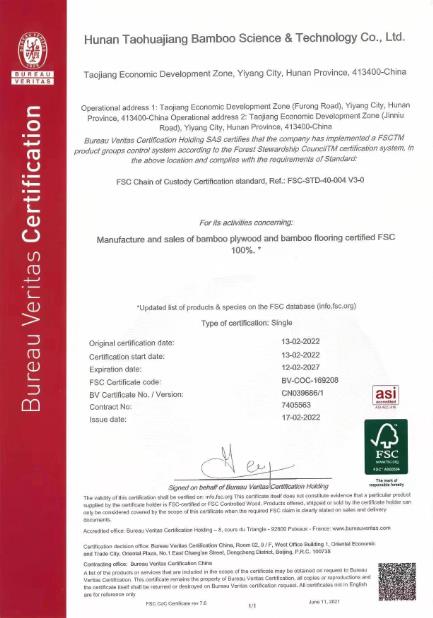2. Most frequent questions and answers for phone wireless charger
1. Iphone: iPhone 14,iPhone 14 Plus,iPhone 14 Pro,iPhone 14 Pro Max, iPhone13Pro, iPhone13,iPhoneSE,iPhone12,iPhone11,iPhone11Pro,iPhone11MAX,iPhoneXR,iPhoneXS,
iPhoneXSMAX,iPhoneX,iPhone8,iPhone8Plus
2.Samsung: GalaxyS22Ultra,GalaxyS22+,GalaxyS22,GalaxyS21Ultra5G,GalaxyS21+5G,
GalaxyS21FE5G,GalaxyS20FE5G,GalaxyZFold35G,GalaxyZFlip35G,GalaxyZFlip35G奥运纪念版,GalaxyZFold25G,GalaxyZFlip5G,W225G,W215G,GalaxyNote20Ultra5G,GalaxyNote10,
GalaxyNote10+,GalaxyNote9,GalaxyS9,GalaxyS9+,GalaxyNote8,GalaxyS8,GalaxyS8+,
GalaxyS8Active,GalaxyNote7,GalaxyNoteFE,GalaxyS7Edge,GalaxyS7Active,GalaxyS7,
GalaxyS6,GalaxyS6Edge,GalaxyS6Active,GalaxyNote5,W2017,KellyW2018,GalaxySLite
3. Huawei: Mate 50,Mate 50 Pro,Mate 50 RS, P50Pro,P40Pro+,P40Pro,P30Pro,Mate40EPro,Mate40RS保时捷设计,Mate40Pro+,Mate40Pro,Mate40,Mate30EPro5G,Mate30Pro5G,Mate20Pro,MateRS
4.Xiaomi: Xiaomi12Pro,Xiaomi12,Xiaomi11,Xiaomi11Pro,Xiaomi11Ultra,Xiaomi10,
Xiaomi10S,Xiaomi10Pro,Xiaomi9透明尊享版 , Xiaomi9Pro, XiaomiMIX4,XiaomiMIX3 XiaomiMIX2S
5. OPPO Find X5, Find X5 Pro, Find X5 Pro 天玑版, Find X3 Pro,Find X3,Ace2
6. Oneplus: 10 Pro
7. vivo X Note, vivo X Fold,X Fold+, X80 Pro, X80 Pro 天玑9000版, iQOO 9 Pro, iQOO 10 Pro, iQOO 8 Pro,X70 Pro+
8. moto X30 Pro
You can check it from official WPC website, here is the link:
https://wirelesspowerconsortium.atlassian.net/servicedesk/customer/portal/12/article/24018945
WPC is comprised of over 300 member companies from across the world. They’re made up of large household brands such as Apple, Sony, Samsung, Microsoft, Huawei and Google, as well as many smaller and start-up technology companies, all who recognize the need and benefits of standards.
You can check the database easily from below official link:
https://www.wirelesspowerconsortium.com/membership-directory-bak/
(But not includes our company yet, it costs high, we’re not ready for it currently.
However, our wireless products are strictly following Qi standard, we’re happy to manufacture the products for your applying for Qi certificate, just shoot us an email.)
1) 5W , most phones support
2) 7.5W, iPhone series
3) 10W, Huawei Mate RS, GalaxyS9.S10, most phone support
4) 15W, Iphone 14, many phones support
5) 20W, Xiaomi 9 series
6) 30W ,OnePlus 8 Pro
7) 40W , Huawei P40 Pro+
8) 50W, Xiaomi 10 Supreme Anniversary Edition, OnePlus 9 series
9) 80W/120W, Xiaomi
On the other hand, usually 3W wireless for watch, 5W wireless for TWS box
It’s difficult to say which one is better, both of them have their own advantages and disadvantages.
Advantages of wireless charging:
- Convenience: Compared to a regular phone charger, wireless phone chargers offer the advantage of charging multiple devices at once without the need for a physical connection. This eliminates the problem of incompatible interfaces and avoids issues caused by repeated plugging and unplugging, which can damage the charging port. Wireless phone chargers are also easier to use, making them accessible to people of all ages.
- Reduced wear and tear: Over time, constantly plugging and unplugging a charging cable can damage the port on your device, so wireless charging can help extend the lifespan of your device.
- Aesthetics: Wireless chargers can be more visually appealing, as they often have sleek designs and fewer cords.
Limited Mobility: Wireless charging requires the device to be attached to the charging base, restricting users’ movement more than wired charging.
High Cost: Compared to traditional wired charging, wireless charging devices require electronic devices for power conversion and coils for wireless transmission, as well as high-frequency circuitry to meet electromagnetic compatibility standards, resulting in higher prices.
Low Efficiency: Wireless charging is less efficient than wired charging, with slower charging speeds compared to some brands’ fast charging functionality, especially at the same input power.
Advantages of cable charging:
- Faster charging: In general, cable charging can be faster than wireless charging, especially if you’re using a fast charger.
- More universal: Almost all devices come with a charging cable, so you don’t need to worry about compatibility issues.
- Cost-effective: Cable chargers are generally less expensive than wireless chargers.
Ultimately, the choice between wireless charging and cable charging depends on your personal preferences and needs. If you prioritize convenience and aesthetics, wireless charging may be a better option. If you prioritize speed and cost-effectiveness, cable charging may be a better option.
No, there’re still many phones that don’t support wireless charging, you can check the phone’s specifications or contact the manufacturer to confirm whether yours support or not
If you still want to use wireless charging function though your phone doesn’t have, buy a wireless receiver which has micro/lightning/Type-C connector (determined by your phone connector), plug it in your phone and put it on the wireless charger, usually, it will work !
- Do not place metal objects, magnets, magnetic cards, or other foreign objects (such as car magnetic suction support iron sheets attached to the back of the phone) between the phone and the wireless charger, as this may cause the phone to fail to charge normally or overheat and cause damage.
- Please place the phone correctly. If the wireless charging coil deviates too much, it may cause low charging efficiency or failure to charge.
- Due to differences in the coil position of different phone brands, it may cause low charging efficiency or failure to charge.
- Do not use phone cases that are too thick or made of magnetic shielding materials, as this may cause the phone to fail to charge normally or overheat and cause damage.
- Do not charge non-Qi standard wireless charging devices to avoid equipment failure or heating.
- Do not block the fan intake and exhaust of the wireless charger.
- Do not drop liquids, dust, pencil leads, toothpicks, pins, and other foreign objects into the fan exhaust. If something falls in, please remove it promptly.
- Do not use wireless chargers in medical and healthcare places where the use of wireless devices is prohibited.
- Wireless chargers may affect implanted medical devices and personal medical devices. When using them, please keep a distance of more than 30cm from devices such as pacemakers, cochlear implants, and hearing aids.
The effective distance for Qi standard wireless charging for phones is typically around 10mm, and the best is within 8mm.
However, there is also long-distance wireless charging technology on the market, mainly used in furniture, which can reach 20-50mm.
The Apple Watch charger is not recommended for charging Iphone, as the power of the watch wireless charger is too small, usually 3W.
The battery of Apple Watch is usually 3V, so the output voltage is around 3.3V, while the battery of cell phone is usually 3.6V to 4.2V.
Yes, besides wood, wireless charging also work through other materials like stone, bamboo, glass, ceramic, leather, plastic, human body..
Our wireless charging docks are manufactured with bamboo, wood,plastic materials, you can have them to charge your phone, watch, TWS box.
Metal and magnetic material
Yes, but first of all, make sure that your phones support the wireless reverse charging function and turn it one in the phone, and the two phones are placed back to back and charged automatically.
1. Click [Battery] in the phone’s settings menu.
2. Turn on the switch on the right side of wireless reverse charging.
3. Place the two phones together to charge back-to-back.
On the other hand, our factory develops some wireless charging docks that has 2-3 wireless outputs, which support to charge 2 phones, 3 phones.
As long as you like, we can ODM for you with wireless charging for 4 phones, 5 phones .. in one station.
Theoretically, wireless chargers do not hurt the battery, because now the battery is basically using lithium batteries, there is no limit to the number of charging times.
But many people still do not want to believe that fast charging, wireless charging does not hurt the battery, especially when use wireless charging, people will frequently pick up and put down the phone.
So let’s now analyze why we feel that wireless fast charging hurts the battery?
Wireless charging is characterized by no cable’s connection to the device, so that people feel pick the phone up then put back soon will hurt the battery.
In fact, people mainly affected by the nickel-hydrogen batteries a long time ago, this battery has memory, the best way for using is to use up and then recharge, to achieve the best state of the battery.
But now the lithium battery is not, this battery doesn’t have “memory”, instead, it’s “a small number of meals” working system, which is more conducive to maintaining the best performance of lithium batteries, that’s to say, no need to wait till they are used up and then recharge, also do not have to be recharged too full.
For this, Apple also officially stated that the iPhone battery can be retaining at least 80% of the capacity after fully charged 500 times cycle. If less than 80%, the power consumption will increase, the performance will be affected. Android phones are also the same reason.
The so-called charging cycle is: the battery is completely full and then completely consumed in one time, that would be regarded as a cycle. It’s not the number of charging.
The wireless charger standard is a set of specifications that define how wireless charging should work.
One of the most widely adopted wireless charging standards is the Qi (pronounced “chee”) standard, which is maintained by the Wireless Power Consortium (WPC).
The Qi standard specifies the design and behavior of both wireless charging devices and the devices being charged, including requirements for power transfer efficiency, safety, interoperability, and electromagnetic compatibility (EMC).
Other wireless charging standards include the AirFuel Alliance and the Power Matters Alliance (PMA), but they are less widely adopted than the Qi standard
Actually, I cannot provide an opinion as to what the “best” wireless charger is, also our wireless charging stations products are not the best too, we’re in the middle-end, but always on the way to be the best!
It is subjective and dependent on individual preferences and needs. However, there are several factors to consider when choosing a wireless charger, such as:
Compatibility: Ensure that the wireless charger is compatible with your device, especially if it has unique charging requirements.
Charging speed: Look for a wireless charger that supports fast charging if you need to charge your device quickly.
Design: Choose a wireless charger that suits your style and preferences, whether it is sleek and minimalistic or bold and colorful.
Safety features: Look for a wireless charger with safety features such as overvoltage protection, overcurrent protection, and temperature control to prevent damage to your device.
Brand reputation: Consider purchasing a wireless charger from a reputable brand with positive customer reviews and reliable customer service.
Ultimately, the “best” wireless charger will vary depending on your needs and preferences, so it is essential to do research and read reviews before making a purchase.
Wireless chargers should have several safety features to prevent potential hazards. Here are some common safety features that wireless chargers should have:
Overvoltage protection: This feature prevents the charger from delivering too much voltage to the device, which can damage or even destroy the device.
Overcurrent protection: This feature prevents the charger from delivering too much current to the device, which can cause overheating and damage to the device.
Short-circuit protection: This feature prevents a short circuit from occurring, which can cause damage to the charger or device.
Temperature protection: This feature monitors the temperature of the device being charged and the charger itself, and will shut down the charging process if either gets too hot.
Foreign object detection: This feature detects any metal objects or other foreign objects that may be in the way of the charging process and shuts down the charging process to prevent damage to the charger or device.
Auto shut-off: This feature automatically stops charging when the device is fully charged, which helps to prevent overcharging and prolongs the life of the device’s battery.
LED indicators: These indicators help users to identify the charging status and any issues that may occur during the charging process, such as an incompatible device or foreign object detection.
It depends on the strength of the magnet and the position of the magnet relative to the wireless charger.
In general, small magnets like those found in phone cases or magnetic mounts for cars should not cause any harm to the wireless charger.
However, larger magnets or magnets positioned close to the wireless charger coil may cause interference and affect the charging efficiency or even damage the wireless charger.
It is recommended to avoid placing strong magnets close to the wireless chargers.
Do you know that there are several types of coils using in the wireless chargers ?
One, two, three, four, five …
The difference between single coil and multiple coils is mainly to increase the induction area and solve the problem of “random placement”.
The charging distance of inductive wireless charging is relatively close, and it is “sensitive” to the distance position, so the user is required to align the receiving coil of the phone “basically” with the transmitting coil in order to better conduct wireless charging. For multi-coil wireless chargers, it is probable that one of the coils will be optimally aligned with the receiving coil of the phone, so multi-coil improves the convenience of “random placement”.
Single coils are mainly used in disc-type flat applications (individual brackets also use single coils with structural restrictions on positioning).
Dual coils are mainly used in vertical bracket applications.
Three-coil applications are relatively rare, both flush and vertical, the most used in car front-mounted products.
Five coils to the main application of flat, generally can support two cell phones charging at the same time, for a single phone can be placed basically “at will”.
Other more coil products are relatively rare.
Reminder: ordinary single-charge with multi-coil program, only one coil is working during the charging, there are no multiple coils working at the same time!

Usually, we use single coil for our bamboo wireless charging pad, desktop charging station, phone charging stand etc., if customers need dual coils, we can manufacture basing on the requirement.
Wireless charger compatibility refers to whether or not a particular device can be wirelessly charged by a specific wireless charging pad. Wireless charging technology is based on different standards, such as Qi, PMA, and A4WP, which can be found in various devices such as smartphones, tablets, and smartwatches.
For example, if a smartphone has Qi wireless charging capability, it will work with any Qi-compatible wireless charger. However, if the smartphone uses a different wireless charging standard, such as PMA or A4WP, it may not work with a Qi wireless charger. Therefore, it is important to ensure that your device and wireless charging pad are compatible before attempting to use wireless charging.
For our wireless charging dock, engineers will design the wireless charging PCBA with compatibility IC, that means no matter for QI, PMA or A4WP standard your phone supports, our bamboo wireless charging dock will work compatiblly.
A non-compatible PCBA will be cheaper than the compatible version, about us$0.8 lower
Wireless chargers, like any other electronic device, emit electromagnetic fields (EMFs), which has led to concerns about their potential health effects. However, there is currently no conclusive evidence that suggests wireless chargers are harmful to human health.
The level of EMF exposure from wireless chargers is relatively low compared to other sources, such as cell phones and Wi-Fi routers. In fact, the International Commission on Non-Ionizing Radiation Protection (ICNIRP) has set safety guidelines for EMF exposure, which include limits for wireless chargers.
Moreover, wireless chargers are designed to meet safety standards set by regulatory agencies, such as the Federal Communications Commission (FCC) in the United States and the European Union’s CE marking. These standards include testing for electromagnetic compatibility (EMC) to ensure that the charger does not interfere with other electronic devices and does not exceed the allowable EMF limits.
In summary, while wireless chargers do emit EMFs, the exposure levels are relatively low and are within the safety limits set by regulatory agencies. Therefore, there is currently no evidence to suggest that they are harmful to human health.
All of our wireless charging station products are with CE, FCC, RoHS certificate, you don’t need to worry about it’s harmful to health.




